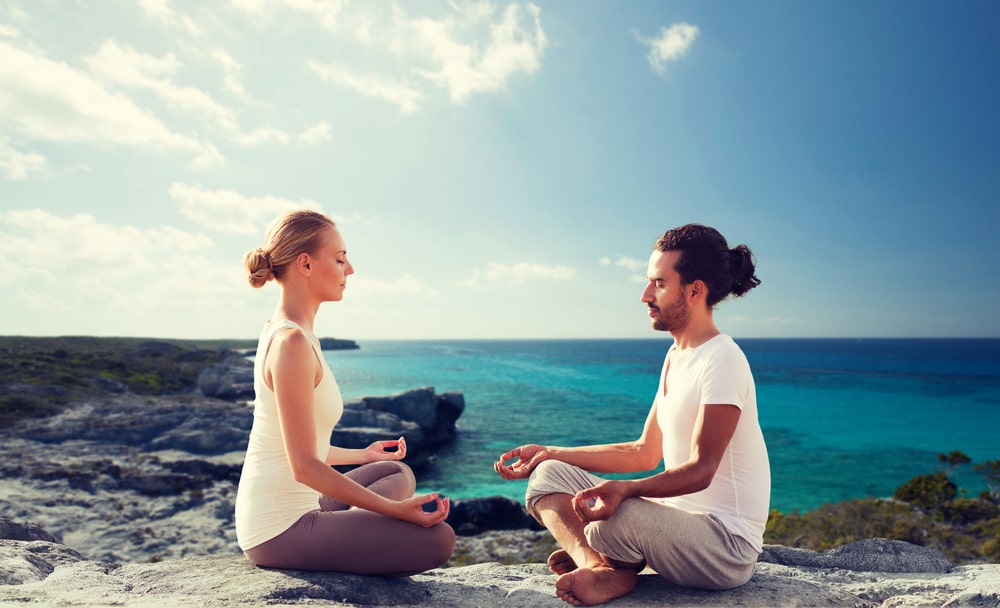
My interest in yoga started when I was 18 years old. All I remember about it was standing in the living room of our family’s duplex and wanting to get involved with yoga. I don’t remember doing anything about it. I don’t remember what sparked my interest. I only know I was drawn to it. I reached to Eastern religions off and on over the years, but it took me until about the age of 43 before I actually started practicing it. I started and stopped for another 10 years or so, just doing the same routines of Hatha Yoga I’d copied from a book borrowed from a library. I learned to meditate when I was about 57 and by that time I was practicing those same routines of yoga daily. I’ve been keeping this practice going steadily since, but I’ve always felt like a beginner in yoga and I didn’t feel I’d advanced as I should have in my meditation. I didn’t follow any techniques beyond the basics I learned in the beginning. There were some amazing experiences in meditation, but I levelled off years ago. Now, this year I am all in on yoga and learning what it can do for me in deepening my meditation.
Benefits From Here to Eternity
There’s plenty to be gained from yoga on a basic, grounded level. As mentioned above, I’ve practiced Hatha Yoga for quite a while at a fundamental level. The writer/instructor who wrote the book where these postures appear stated something to the effect that these three rounds of routines would provide good stretching exercise for all parts of the body. By rotating them consecutively day after day, the practitioner would keep the entire body worked every week. I don’t recall the author’s name unfortunately, but on one of the pages I have, he lists benefits to be had by practicing daily. Here are some of those.
Develop strength and muscle tone in all areas of the body. Increase endurance and heighten resistance to many common disorders. Maintain lifelong flexibility in spine and limbs. Acquire greater control of the body through cultivation of balance and poise. Overcome various negative conditions of the body such as stiffness, congestion, nervousness. Promote the regulation and redistribution of weight.
I can say that as I’ve grown older, I have mostly maintained the same level of flexibility despite the added years and doing work that has largely been at a desk. Interestingly, I’ve wanted more from yoga. I aspired to the mental and spiritual development it promised. A good friend took it up seriously and encouraged me to do the same. He gave me a couple books on the subject, including Autobiography of a Yogi by Paramahansa Yogananda. I took some of what I learned and used it in my meditation, but I didn’t really commit myself to it. There is much more to yoga than the physical part of it, though. Testimonies by many people over many years give us some insight into the life-changing potential of this practice.
“Yoga is a way to freedom. By its constant practice, we can free ourselves from fear, anguish and loneliness.” – Indra Devi
”True yoga is not about the shape of your body, but the shape of your life. Yoga is not to be performed; yoga is to be lived. Yoga doesn’t care about what you have been; yoga cares about the person you are becoming. Yoga is designed for a vast and profound purpose, and for it to be truly called yoga, its essence must be embodied.” – Aadil Palkhivala
”Yoga is a light, which once lit will never dim. The better your practice, the brighter your flame.” — B.K.S. Iyengar
”Yoga is the journey of the self, through the self, to the self.”– The Bhagavad Gita

”Yoga exists in the world because everything is linked.” –Desikashar
”Yoga takes you into the present moment. The only place where life exists.” – Anonymous
On a Broader Scale
The use of yoga has been effective in programs across the world where change is needed. One example is in Kenya, where the Africa Yoga Project has created jobs by training young Kenyans in depressed neighborhoods to be yoga instructors since 2007. The increase of jobs has meant that more than 300 classes per week are being taught to over 5000 citizens, bringing physical, mental and spiritual progress to a lot of people in need.
There have been a number of projects involving the teaching of yoga to incarcerated people all over the United States as part of their rehabilitation. An important part of practicing yoga is learning to control one’s emotions. People who commit crimes are often disadvantaged by a lifetime of poverty, discrimination, abuse, addiction and more. They have had to deal with situations that draw out extreme emotions and these can lead to impulsive action. Also, they are more likely to be focused on just being able to survive, trying to keep their bodies alive. Yoga can turn their attention to higher realms of existence, thus allowing them to concentrate on well-being and peace.
Yoga has been found in studies to help children cope with stress and their performance in school. This is particularly important for those who live in poor neighborhoods where there is more stress. There are programs that are helping children in such situations to stay in school.
Best Yet to Come
The practice of yoga will lead to better fitness, mental stability and spiritual elevation. It’s good for the individual and the human race in general. I urge you to give it a try.

Leave a Reply